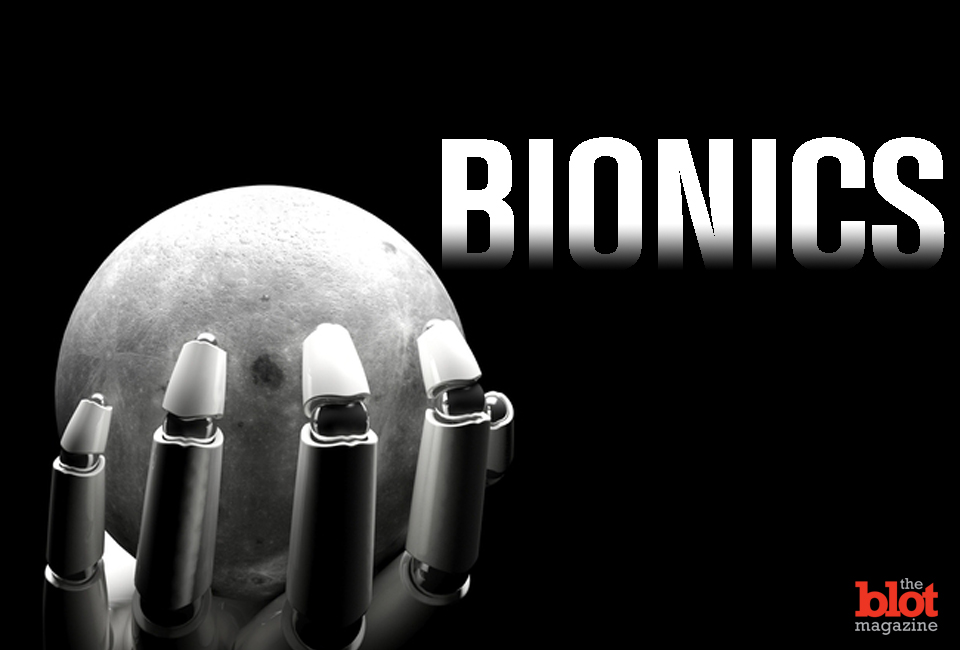Back in the 1970s, things were pretty uncool. Polyester leisure suits, disco music, gasoline lines, losing Vietnam, Nixon’s re-election, Erhard Seminar Training (EST — Google it and be stunned by the stupidity of your elders) and avocado-colored kitchen appliances (no need to Google, just be stunned). But there were a few things swimming against this tide of not-even-mediocrity. For instance, TV had “The Six Million Dollar Man.”
Lee Majors played Steve Austin, an astronaut and test pilot, who was in a bad plane crash. The government put him back together for $6 million (that was much more money in those days) with new bionic legs, a bionic arm and a bionic eye. Thus, he has superhero powers that were based in science.
Or as the opening sequence put it, “Steve Austin, astronaut. A man barely alive. Gentlemen, we can rebuild him. We have the technology. We have the capability to build the world’s first bionic man. Steve Austin will be that man. Better than he was before. Better, stronger, faster.”
Well, as usual, give the geeks some money and some time, and they’ll remake your world. Igor Spetic lost his right hand in an accident four years ago. He was given a genuine bionic replacement, but like all artificial limbs, he had no sense of feeling with it. So he had no idea how tightly he was squeezing something — which is a problem if you are holding an egg or a baby. Spetic had to judge based on how it looked (if the egg cracked or the baby screamed, the grip was too tight).
Enter the big-brained guys at Case Western Reserve University out Cleveland way. A team of researchers attached sensors to the arm and put “cuffs” on the remaining nerves in the part of the arm Spetic didn’t lose (that required surgery). As a result, there was now a pathway to send signals from the surface of the arm (the skin, if you will) to his brain.
As James Gallagher at the BBC put it, “The team could send different patterns of electronic stimulation to the nerves using a computer. These were interpreted in the brain as different sensations. The team ‘mapped’ these sensations to 19 different locations on the hand, from the palm to the tip of the thumb, and matched the sensors to the different electronic patterns of stimulation. They then moved on to pressure and textures.”
Spetic has been using his hand in the lab for two-and-a-half years. A second man, Keith Vonderhuevel, has had similar treatment and has had a sensing bionic hand for a year and a half. How good is it? “This feels like normal sensation,” Spetic said in an interview with The Associated Press. And sometimes, the fine-tuning needs doing. “One time, I had the distinct feeling of water trickling down the back of my hand,” said Vonderhuevel. “It was crazy.”
Even better, they no longer have the phantom pain that many amputees feel where the missing digit or limb aches even though it isn’t really there.
In addition, there is some work being done at Chalmers University of Technology in Sweden whereby the prosthesis is attached to the bone — in itself nothing new. However, the method allows for some connection to the remaining nerves.
The “patient, identified only as Magnus,” the article in Businessweek stated, “has used the device at home and work for the past year, even sleeping with it attached. The tight connections allow Magnus, a truck driver, to have more precise, natural control over the arm. He can tie his children’s shoes, catch a ball out of the air and even crack an egg on command.”
I love the 21st century. Except for the flying cars and the moon colonies, everything that was science fiction when I was a kid is becoming science fact. And most of it makes the world better. Like Paul Weller sang, “I could show Steve Austin a thing or two.”
Jeff Myhre is a contributing journalist for TheBlot Magazine.






